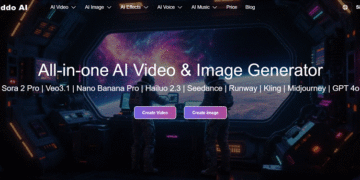
As organizations grapple with mounting pressure to deliver accurate financial data faster and more transparently, the reliability of enterprise reporting tools is under the spotlight. The shift from legacy SAP systems to modern Fiori-based interfaces has streamlined design and usability, but not without trade-offs. In this evolution, some critical features have been left behind, creating friction for finance teams navigating massive datasets. One such example? The missing “freeze header” functionality in the Fiorified BI Launchpad of SAP Web Intelligence (WebI)—a seemingly minor omission with major implications for financial professionals worldwide.
One expert who recognized this critical gap and took decisive action is Kumail Saif, a seasoned SAP consultant with over 18 years of experience. His career spans high-impact projects across the U.S., Germany, the Netherlands, and Portugal. But it’s not just his geographical reach that makes his contribution remarkable; it’s the insight he brings from the field straight into product innovation. When global finance teams struggled with disorienting report navigation in WebI, Saif didn’t just sympathize, he solved.
While working with a U.S. based insurance client on their SAP S/4 HANA implementation, he observed a recurring issue: financial analysts were losing valuable context while scrolling through vast data tables in WebI reports. “These users are preparing critical deliverables—SEC filings, quarterly results. When the report header disappears, they lose the ability to validate data accurately. It slows them down and introduces risk,” he explained.
Saif took this real-world pain point and turned it into a technical solution. Through the SAP Customer Influence program, he proposed an enhancement in 2018: reintroduce the “freeze header” functionality in the modern, Fiori-based BI Launchpad. This wasn’t a mere UI tweak; it was a deeply contextualized improvement based on user behavior, reporting workflows, and compliance requirements. By Q4 2021, SAP had accepted, evaluated, and deployed the enhancement globally.
The impact of his contribution goes far beyond one organization. SAP BusinessObjects Web Intelligence is used by over 900 companies worldwide, including firms in critical sectors like finance, healthcare, and energy. According to Enlyft, the tool holds a 0.14% market share in the business intelligence space, a seemingly small slice, but one representing hundreds of enterprise-grade reporting teams.
With the freeze header functionality now active, report users around the world benefit from faster navigation, fewer interpretation errors, and more efficient data analysis during high-stakes review cycles. “The improvement restored parity between the classic and Fiori interfaces,” he noted. “It bridged a gap that many teams didn’t even know could be addressed.”
The professional’s journey from observation to implementation wasn’t without hurdles. First, he had to translate a user experience problem into language that SAP’s technical and product teams could prioritize. Then came the architectural challenge: the proposed enhancement had to align with Fiori’s design principles and SAP’s long-term UX strategy. That was possible because of his experience and observation from SAP’s different product versions.
“It wasn’t just about fixing something missing,” he said. “It was about proposing something that fit SAP’s evolving architecture without creating future conflict. That’s a delicate balance.”
He showed the value through reduced reporting errors and improved productivity. This required him to think not just as a developer, but as a strategist. And that, perhaps, is the core of his expertise.
Furthermore, his credibility isn’t just built on contributions; it’s backed by an impressive portfolio of published work. His research includes titles like “Realtime Financial Reporting using SAP S/4 HANA Embedded Analytics” and “Critical Role of SAP BW Bridge to Transition SAP Data Warehouse to the Cloud”, highlighting his command over both business and technical aspects of SAP. His projects read like a cross-section of global enterprise transformation: SAP CRM implementation for a utilities client in Portugal, multiple upgrade and support projects in Germany and the Netherlands, and a major S/4 HANA rollout for a U.S. insurance giant. In each, his role has gone beyond technical delivery; he has shaped strategy and improved end-user outcomes.
For our expert, this experience solidified a core belief: consultants must think beyond execution. “Real innovation happens when product limitations are challenged with purpose. We shouldn’t just implement tools, we should help improve them,” he emphasized. He also sees a future where user-centric enhancements drive enterprise software development. “There’s a growing need for reporting tools to adapt to how users work, not the other way around. Whether it’s contextual headers, intuitive drilldowns, or seamless cloud integration, the focus has to shift to usability.”
He encourages fellow consultants and developers to get involved in platforms like SAP’s Customer Influence program. “Your insights from the ground can shape tools used by thousands. That’s a powerful responsibility, and an even greater opportunity.”
This mindset reflects a larger truth often overlooked in enterprise technology: small, well-targeted enhancements can drive outsized impact. Kumail Saif didn’t just identify a bug; he restored functionality, improved global productivity, and demonstrated what true thought leadership looks like in this space.
As reporting environments continue to grow, his story is a reminder that the best improvements often start with a single, well-informed observation and the willingness to act on it.










































































